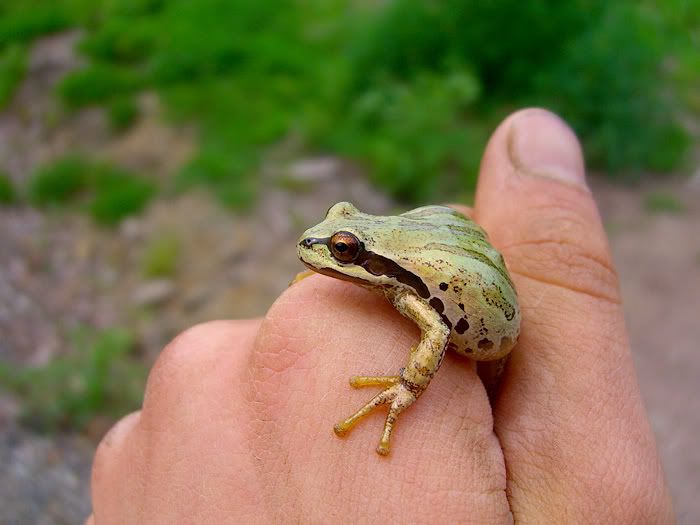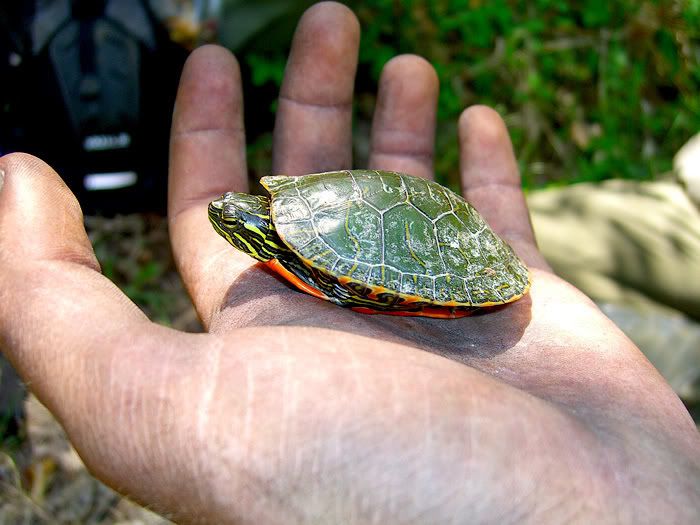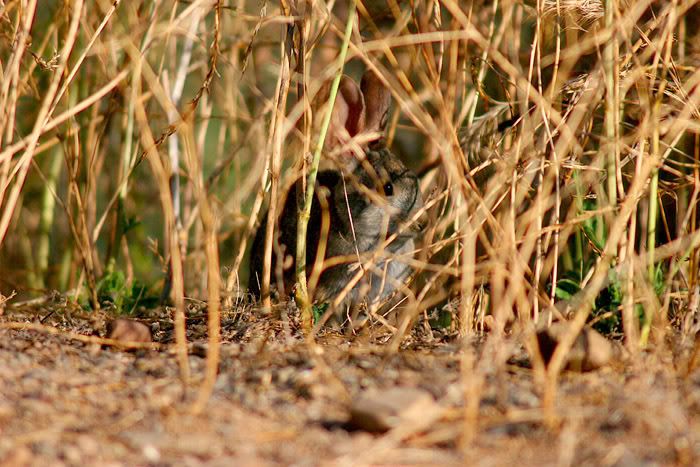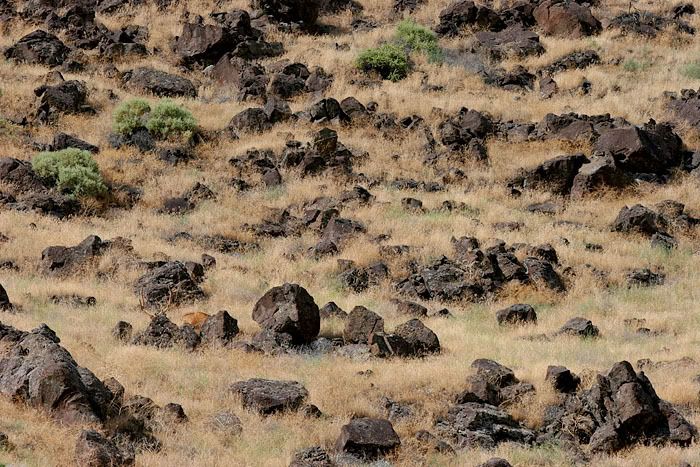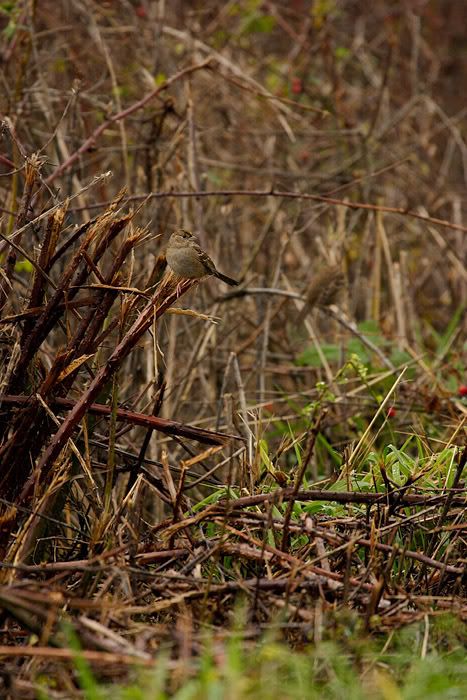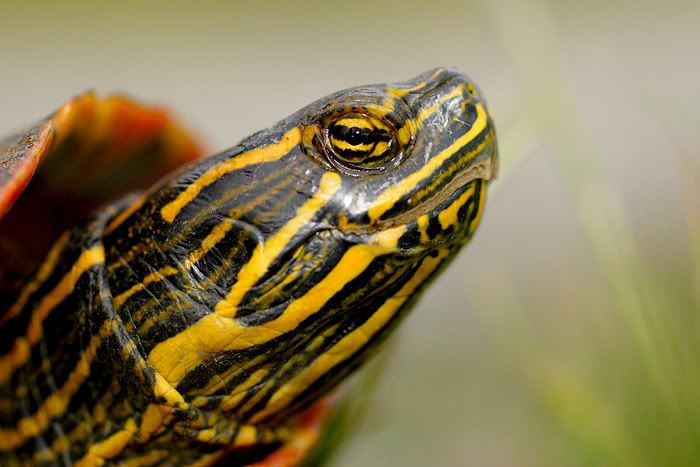
Seattle is the emerald city. Still the greenest city I have seen anywhere, with many parks and green spaces throughout. Surprisingly, wildlife abounds in the city. Crows, owls, eagles, coyotes, raccoons and many other creatures are common through out the city and its many neighborhoods.
One area of Seattle I have had the pleasure of getting to know more intimately is the Union Bay Natural Area. Despite its diminutive size (~50 acres) and the fact that it is a restored wetland on top of a landfill, it is still a wildlife gem. It even shows up in Wikipedia! There is a wealth of species that occur here, some more numerous here than anywhere else in all of Lake Washington. Turtles, for instance, are very numerous and most visible on warm spring or summer days.
As with many urban or near-urban natural areas, Union Bay is a melting pot of native and non-native vegetable and animal species. It is debatable as to whether any of the turtles living in the natural area are native. The most numerous species by far is the red-eared slider (Trachemys scripta elegans).

This tiny individual was surprisingly trusting. It allowed very close approach by inflatable raft. This is about the size they are sold at pet shops throughout the country. Notice the reddish marking directly behind the eye. The beautifully clear patterns on its shell are a sign of its youth. Many members of this species grow much darker with age, their markings become less distinct. A few are known to become darker still, becoming nearly completely melanistic such as the one below.
 These turtles are hardy, can tolerate relatively cool temperatures and if it gets too cold for them, they will dig down into the mud and go into hibernation awaiting warmer days. Surprisingly though, I have seen a few of them out on winter days, when the air temperature was around 48 and it was mostly sunny.
These turtles are hardy, can tolerate relatively cool temperatures and if it gets too cold for them, they will dig down into the mud and go into hibernation awaiting warmer days. Surprisingly though, I have seen a few of them out on winter days, when the air temperature was around 48 and it was mostly sunny.There is one species of turtle common to Union Bay that is actually native to Washington (mainly East of the Cascades), and that is the western painted turtle (Chrysemys picta bellii). A close relative of the red-eared slider, it lacks the red marking behind the eye. It also has a gorgeously patterned red plastron (underside of shell). During one of my many visits to the natural area, I found a female painted turtle that had crawled a considerable distance inland and was busy digging a hole on the side of the gravel trail for her eggs.
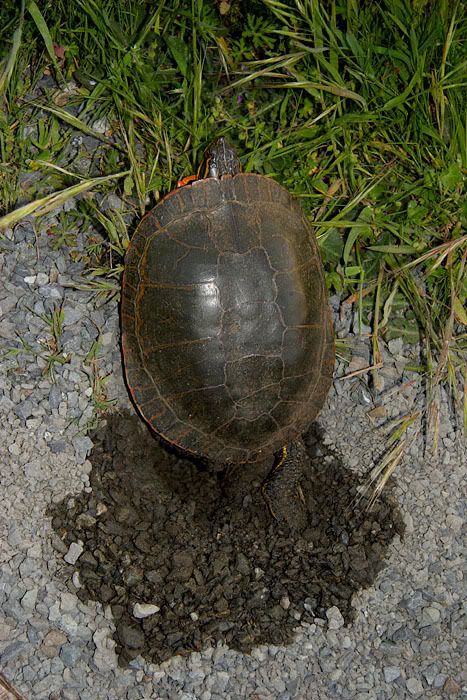
Amazingly, turtles go into a trance-like state of intense concentration when they are nesting. I am uncertain what benefit of this behavior is, though it no doubt serves an important function. It also allows for incredible close approach. The photo above was taken literally standing right over the turtle, which continued digging totally undisturbed. The shot at the very beginning of this post is a close-up of the same turtle's face.
Though there are likely more species of turtles introduced into the lake, I only want to mention one more here. This one came as a complete surprise to me as I had not heard anyone describe, not even the professors at Univeristy of Washington seemed to have known about them. One day during a slow paddle through the lily-pad choked wetland channels I spotted a very unusual animal sunning on a log. It appeared to be a giant turtle, with a gleaming shell... only the shell was more like a pancake on top of a turtle-shaped animal. My trusty National Audubon Field Guide to Reptiles and Amphibians helped me to figure it out: spiny softshell turtle (Apalone spinifera). Unlike the other turtles in the area, this one had a soft, leathery shell. This first animal was extremely wary and dove when I was still many meter away. It was several weeks before another one showed itself. Eventually, with a lot of patience and prayer, I got much closer to these mystery animals.

Though the first animal I saw was very large, the first turtle of this kind that let me get close was much smaller. I later learned it was an adult male of the species. It was the female that was much, much larger. The male in this shot has a shell of about 7 inches in total length. You can clearly make out the snorkel-like nose of this species which it can poke out of the water without expose any other part of its head.
The females grow to a shell length of around 19-20 inches in length. Add to that a large head and neck and they can be over 2 feet in total length! Though I can't say I ever got any exact measurements on the giant females I got close to, my estimates were at least 18 inches in shell length for the largest one I saw and photographed (she appears below).
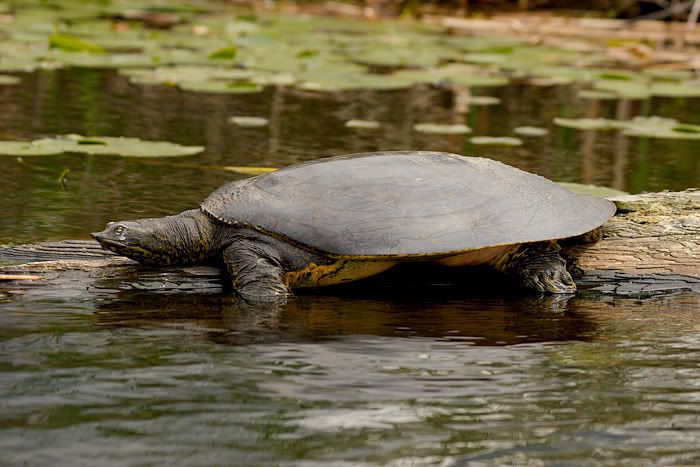 Seeing such large reptiles makes me think of something from the ancient times, when giant creatures ruled the earth! These great turtles are one of the top predators of the Union Bay Natural Area, along with the great blue herons, bald eagles, otters and coyotes.
Seeing such large reptiles makes me think of something from the ancient times, when giant creatures ruled the earth! These great turtles are one of the top predators of the Union Bay Natural Area, along with the great blue herons, bald eagles, otters and coyotes.It is uncertain what effect the introduced turtles have on the native ecosystem of Lake Washington. The lake has been so altered by the hands of modern human beings that it is very difficult to even imagine what the native biological system may have looked like. Invasive species are a hotly debated topic and I have learned so much about them from spending time at Union Bay. I will share more on that topic specifically sometime later.

